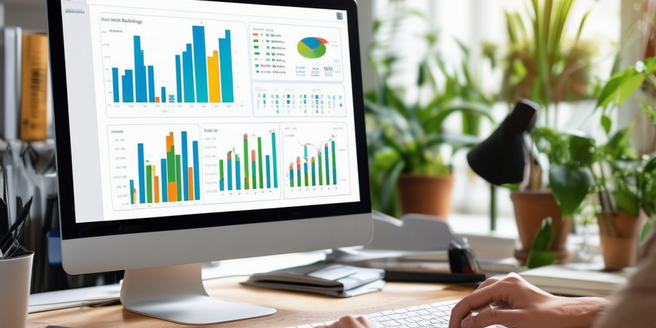Introduction to Budgeting Tools
Budgeting tools have become essential for managing personal finances. These tools help track income, expenses, and savings goals efficiently. They offer a variety of features, from basic expense tracking to more advanced financial planning and forecasting. The primary advantage is the automation and consolidation of financial data, which minimizes the risk of errors associated with manual entry. Whether you are looking to save for a big purchase, pay off debt, or simply manage your day-to-day expenses, budgeting tools can offer valuable insights and help you stay on track. In this introduction, we will explore the different kinds of budgeting tools available and how they can benefit users at various stages of their financial journey.
Key Features to Look For
When selecting a budgeting tool, there are several key features to consider. First, look for tools that offer robust expense tracking capabilities; this includes the ability to categorize expenses and generate detailed reports. Another important feature is synchronization with your bank accounts to import transactions automatically. Budgeting tools should also offer customizable budgets that can be adjusted over time. Additional useful features include bill reminders, goal setting, and spending alerts. Security measures such as encryption and multi-factor authentication are crucial to protect your financial information. Lastly, consider the user interface and ease of use, as a more intuitive tool will make managing your finances less tedious.
Top Free Budgeting Tools
Several free budgeting tools offer a comprehensive range of features without any cost. Mint is a popular choice, providing expense tracking, bill reminders, and free credit scores. Another excellent option is Personal Capital, which combines budgeting with investment tracking. For those who prefer a simple, no-frills approach, Simple Budget offers a straightforward method to track spending and set savings goals without any complicated features. Goodbudget is a digital envelope budgeting system that can help users manage finances and track goals. Each of these tools offers unique features tailored to different needs, making it easier for individuals to find the right tool to manage their finances effectively.
Premium Budgeting Software Options
For those willing to invest in premium features, several budgeting software options offer advanced tools. YNAB (You Need A Budget) is known for its proactive approach, encouraging users to assign every dollar a job. It provides robust reporting tools and hands-on support. Another option is Quicken, which offers extensive features, including investment tracking and bill management. Tiller Money stands out with its customizable spreadsheets that automatically update financial data. PocketSmith offers detailed financial forecasting, allowing users to see their future balances. These premium options come with a subscription fee but offer advanced features that can provide a more comprehensive overview and control of your finances.
Pros and Cons of Popular Tools
Each budgeting tool has its pros and cons. Mint, for instance, is free and comprehensive but includes ads and may have occasional syncing issues. Personal Capital offers excellent investment tools but can be overwhelming for basic budgeters. YNAB promotes proactive budgeting but comes with a subscription fee and a learning curve. Quicken is feature-rich but can be expensive and complex. Tiller Money’s spreadsheets are highly customizable but may not appeal to users unfamiliar with Excel or Google Sheets. Goodbudget is user-friendly and great for envelope budgeting but lacks automated transaction syncing. Knowing these pros and cons can help users make an informed choice based on their specific needs and preferences.
Choosing the Right Tool for You
Selecting the right budgeting tool depends on your financial goals, habits, and comfort with technology. Start by identifying what features are most important to you, such as tracking expenses, syncing with bank accounts, or managing investments. Consider the ease of use and whether a simple or more complex tool fits your needs. Free tools like Mint and Personal Capital offer great features without a cost, while premium options like YNAB and Quicken provide more advanced functionality for a subscription fee. Ultimately, the best tool is one that you will use consistently to gain insights into your spending habits and help you achieve your financial goals.



